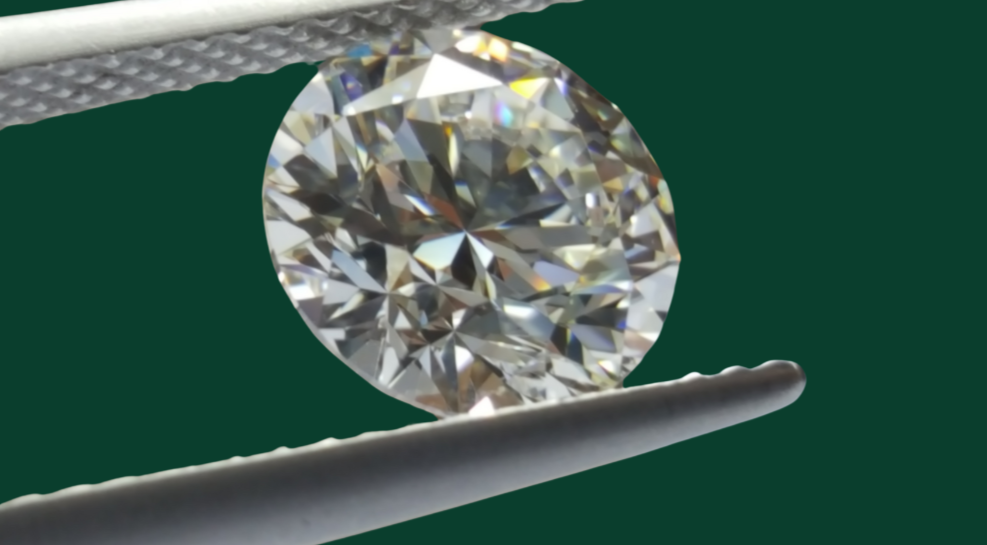Learn More
Learn About Moissanite
 Moissanite vs Lab Diamonds
Moissanite vs Lab Diamonds
Moissanite is not a diamond imitation—it’s a rare gemstone in its own right, known for its exceptional brilliance and durability. While it
looks remarkably similar to a diamond, it is chemically and compositionally
different.
Moissanite has a higher refractive index than diamonds, which means it reflects more light and delivers even more sparkle. On the Mohs scale of hardness, diamonds score a 10, while Moissanite ranks just behind at
9.25–9.5—making it one of the hardest known gemstones, above rubies, sapphires,
and emeralds.
It’s also an ethical and sustainable choice. Lab-created, fully traceable, conflict-free, and eco-friendly—Moissanite won’t fade,
discolour, or lose its fire over time.
At LimitedJewelsCo, we only use premium-grade Moissanite—stones that are completely colourless (D–E–F range), exceptionally pure, and crafted
to deliver lasting brilliance.
Yes—lab-grown diamonds are real diamonds.
They are made of crystallised carbon, just like natural diamonds, and share the exact same physical, chemical, and optical properties.
To the naked eye and under a microscope, they are indistinguishable from mined
diamonds.
The only difference lies in their origin: lab-grown diamonds are formed using advanced technology that replicates the high pressure and heat
conditions found deep within the Earth—without the need for mining.
They offer all the brilliance and beauty of natural diamonds, but without the environmental impact or ethical concerns. Lab-grown
diamonds are conflict-free, eco-friendly, and a more sustainable choice for
modern luxury.
Investing in Moissanite jewellery is both a personal and financial decision. It’s not just about aesthetics—it’s about choosing pieces that reflect your values, style, and priorities.
One of the biggest advantages of Moissanite over natural diamonds is the price. For instance, a diamond piece that costs $6,000 could be matched in size and sparkle by a Moissanite version for around $1,000. That’s a significant saving—while still offering the brilliance and luxury look you
love.
Some people assume natural diamonds are a better investment,
while Moissanite or lab-grown options won’t retain value. But in reality, most
mined diamonds lose value the moment they’re purchased—much like cars or
household items. Unlike gold, natural diamonds generally don't hold or increase
in value over time.
Moissanite offers exceptional sparkle, durability, and
ethical peace of mind—without the environmental toll or inflated price tag. For
many, that makes Moissanite jewellery not just worth it—but the smarter, more
conscious choice.
Not at all—Moissanites are remarkably similar in appearance to diamonds, making them an excellent alternative. Their brilliance, clarity, and sparkle closely mimic that of natural diamonds, and in most cases, people won’t notice any difference unless you point it out.
If you ask a traditional jeweller about Moissanite, you might receive mixed responses. Some may provide honest and accurate information, while others might claim that Moissanite isn’t durable, loses its colour over time, or simply doesn’t compare to natural diamonds. It's important to take these opinions with a grain of salt.
The truth is, natural diamonds are a major part of many jewellers’ business models. It's often in their interest to preserve the traditional diamond industry. Some may even show you lower-quality examples of Moissanite or lab-grown diamonds next to natural diamonds to reinforce their point—creating a biased and misleading comparison.
This isn’t to say all jewellers are like this, but it highlights the importance of doing your own research. An informed decision based on facts—not outdated industry opinions—will help you choose what’s truly right for you.
These terms refer to the colour and clarity grading of a gemstone—two key factors that influence a stone’s appearance and value.
If you're new to fine jewellery, this language can be confusing, so here’s a simple breakdown:
Colour Grades (D–E–F)
These grades indicate how colourless a stone is. The less colour present, the
higher the grade.
D –
Completely colourless (the highest possible grade)
E –
Nearly colourless, with only minute traces of colour detectable under
magnification
F –
Colourless to the naked eye, with very slight hints of colour visible
under close inspection
Stones graded D–F appear bright, white, and are considered
premium quality.
Clarity Grades (VVS1, VS1, SI1)
Clarity refers to the presence of internal characteristics, known as
inclusions.
VVS1
(Very Very Slightly Included) – Inclusions are extremely difficult to
detect, even under magnification
VS1
(Very Slightly Included) – Minor inclusions are present, but only visible
under magnification
SI1
(Slightly Included) – Small inclusions may be visible under magnification,
but are typically not noticeable when worn
Most Moissanite and lab-grown diamonds offer excellent clarity and appear flawless to the eye.






